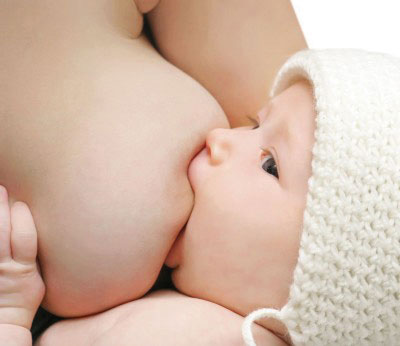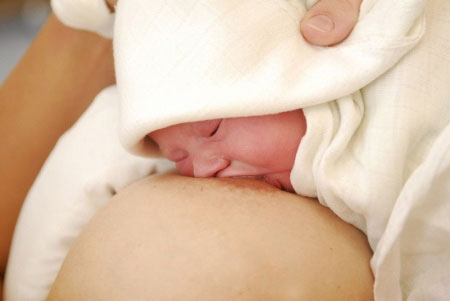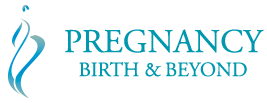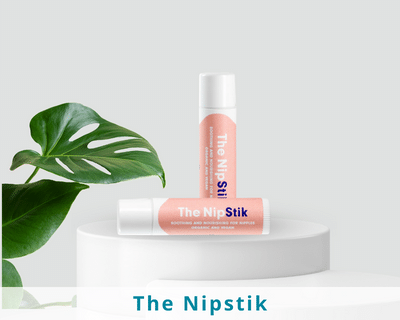 When it comes to breastfeeding, a good deal of criticism has fallen on the humble breast. Some believe that small-breasted women will find breastfeeding next to impossible. Others consider breastfeeding with large breasts to be the true bugbear. The truth is that the size of your breasts has no bearing on how much milk you will produce or ease of breastfeeding. Common myths about breastfeeding with large breasts include:
When it comes to breastfeeding, a good deal of criticism has fallen on the humble breast. Some believe that small-breasted women will find breastfeeding next to impossible. Others consider breastfeeding with large breasts to be the true bugbear. The truth is that the size of your breasts has no bearing on how much milk you will produce or ease of breastfeeding. Common myths about breastfeeding with large breasts include:
- Large breasts produce more milk: the size of your breast is determined by the amount of fatty tissue they contain. It is the glandular tissue in your breasts which produce milk.
- When breastfeeding with large breasts you need to use your finger to keep the breast away from your baby’s nose. Not if you correctly position your baby.
- Large breasts make breastfeeding difficult: breastfeeding can present challenges no matter the breast size but careful attention to positioning and attachment can overcome these.
- Large breasts make breastfeeding easy: Some mothers find breastfeeding relatively straight forward from the start and others take more time, irrespective of breast size
Positioning your breast
If you are breastfeeding with large breasts your first consideration is probably the size of your breast relative to the size of your baby and how both you and s/he can be comfortable when feeding. Positions that seemed to work well for women with large breasts include the cradle hold and the football hold. Lying down to breastfeed can also work well, although it obviously has its limitations as a position when you are out and about.
Feeding pillows can be of great assistance when you are first learning to breastfeed, by helping you to position your baby and alleviating their weight. Over time though women who are breastfeeding with large breasts may well find pillows are unnecessary or worse, a hindrance. Because your breasts are larger, your baby needs to be much lower down to feed and so some or perhaps all of their weight can be supported by your lap.
If you find your breasts reach your lap and positioning your baby is difficult, the breast support wedge can help. Placed under the breast the support wedge lifts and supports the breast while feeding. A towel rolled up and placed in the crease under your breast, may also be an effective solution. In addition to removing the need to lift the breast up to feed your baby, supporting the breast also helps to prevent your baby’s nose from being covered, enabling them to breathe and feed better.
Attachment
 Perhaps the most important moment in any successful feed is the moment when your baby latches on. Many breastfeeding difficulties are caused by a poor latch so if you can achieve a good one you are probably three-quarters of the way to success! When breastfeeding with large breasts many women find the C-hold can be useful in helping to shape and control their breast position while the baby is latching on. The C-hold enables you to see your nipple better and bring the baby to the breast more smoothly.
Perhaps the most important moment in any successful feed is the moment when your baby latches on. Many breastfeeding difficulties are caused by a poor latch so if you can achieve a good one you are probably three-quarters of the way to success! When breastfeeding with large breasts many women find the C-hold can be useful in helping to shape and control their breast position while the baby is latching on. The C-hold enables you to see your nipple better and bring the baby to the breast more smoothly.
The C-hold quite literally involves cupping the breast, with your hand in a C-shape. The palm of your hand is placed against the breast, your thumb above your areola (the coloured ring around your nipple) and your fingers under your breast. Gentle support the breast rather than squeezing it (squeezing can cause pain and blocked milk ducts). You can use either hand to create the C-hold, whichever feels most comfortable. Now you have some control over one side of the breastfeeding equation it’s time to turn your attention to the other – positioning your baby.
Positioning your baby
The best position for your baby when breastfeeding with large breasts or smaller ones is the same. Position your baby so their chin is touching the breast, and their head is tilted back away from the breast. This leaves the nose clear to enable better breathing – no need for that aforementioned finger! This is also the best position to avoid nipple damage during feeding.
When positioning your baby it can be useful to use the hand on the same side you are feeding on to create the C-hold and your other arm to gentle support baby’s back. This will allow you to bring the baby to the breast with your breast cupped and ready, and baby supported, chin to breast and nose away. Be sure your breast remains supported during the feed so its weight does not pull any of the breasts from your baby’s mouth. This can turn a good latch into a poor one, interrupt the feed and result in damage to your nipples.

Breastfeeding in public
When first learning the art of breastfeeding, the idea of doing so in public can seem daunting. You may be concerned about discretion and privacy, and also how you will manage without them if you are accustomed to using feeding pillows.
Many shopping centres now include parenting rooms which have discreet feeding areas. This can help to provide a more comfortable place to feed as well as removing the distractions of bright lights and bustling people from a little one who wants to look at everything! Some rooms are better kitted out than others so it pays to go on a recognisance mission before you give birth and check out all the shopping centres in the area. If only they knew that where a breastfeeding mother spends her shopping dollar might well come down to the quality of their feeding facilities!
If a feeding room isn’t available, wearing loose-fitting clothing can help to make draping much easier when breastfeeding with large breasts. Placing your pram in from of you can also provide a little more privacy.
Advantages of breastfeeding with large breasts
When breastfeeding with large breasts mothers may well find those around them attribute any breastfeeding issues to the size of their breasts. A mother with large breasts may be self-conscious about their size. She may also have developed a negative self-concept towards her breasts as a result of years of struggling to find bras that fit, enduring back pain from the weight, and sweltering through hot, sticky summers. However, when it comes to breastfeeding with large breasts, there are some distinct advantages:
- Lying down to feed is generally easier with large breasts
- You may be able to support some or all of your baby’s weight on your lap even when they are tiny
- When it’s hot you can lie on your side with your baby a little distance away creating an air gap between your bodies
- If your baby falls asleep during the feed you may well be able to lean over the lowered cot side and place your baby down while still attached, enable you to resettle them more easily
The key to success
Confidence and determination are the keys to breastfeeding success. However, especially with your first baby, confidence may be in short supply. The good news is there is help out there. Speak to your doctor or midwife about any concerns you may have and have your breasts checked if this will help to alleviate your concerns.
If you are experiencing difficulties you may find a lactation consultant helpful – a health professional particularly skilled in supporting breastfeeding. To find a lactation consultant visit Lactation Consultants of Australia and New Zealand (LCANZ). The Australian Breastfeeding Association also runs Breastfeeding Support Groups and a free Mum 2 Mum Breastfeeding Helpline staffed by trained, volunteer counsellors who are also breastfeeding mothers – 1800 686 268.
Most importantly trust and respect your breasts and seek help from those who have walked the mothering road, breastfeeding with large breasts!
Last updated 30th January 2021




Recent Comments